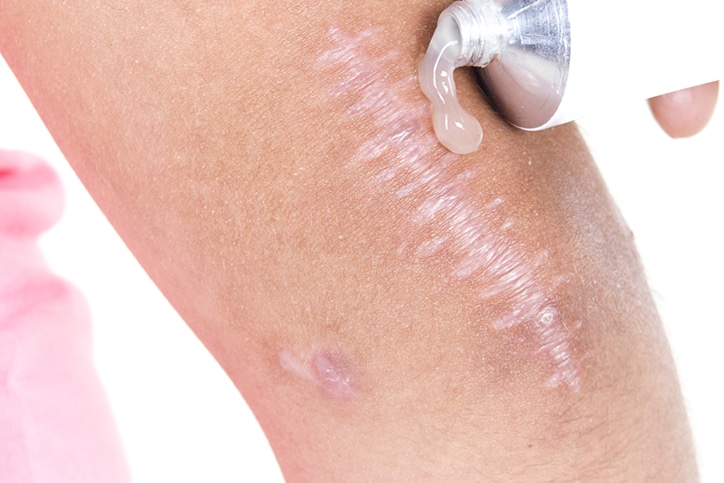
Scars are a natural part of the healing process and are bound to happen more than a few times throughout life. Our bodies put this particular defense mechanism in motion in order to protect and heal itself from wounds. Collagen in our skin will generate new skin cells to protect an opening in the layers of skin, but the new skin that forms while healing is often a different color from the rest of the body – red at first, then pink, then white.
There are many misconceptions people have about scars and we’re here to set the record straight.
Misconception: Being tan will help your scar blend in better.
Truth: Not the case. UV rays will set off your body’s hyperpigmentation reaction, darkening the unscarred skin while the scar stays white and becomes even more visible when compared with the rest of your skin.
Solution: Apply a sunscreen of SPF 30 or more on the scar (and the rest of your skin) to keep it protected.
Misconception: Scars will get lighter and fade with time.
Truth: This is true in many cases where an initial scar starts out red or pink, but fades to a white color over time. However, this is not the case with keloid scars, hypertrophic scars and infected wounds. These won’t fade without special treatment.
Solution: See your dermatologist if you have an itchy, red, or raised scar. Apply silicone scar gel treatments on keloid and hypertrophic scars. Ointments like Scarfade, for example, have been scientifically proven to reduce the appearance of scars.
Misconception: Vitamin E is the best for damaged skin.
Truth: Studies have revealed that Vitamin E actually delays the healing process and can even trigger an allergic reaction.
Solution: Instead, try topical scar treatments that contain Vitamin C — a healing antioxidant.
Misconception: Let a healing wound dry out.
Truth: Dry skin doesn’t heal as well as skin that stays moisturized.
Solution: Keep the wound covered while it’s healing. Apply antibiotic or silicone gel cream and drink lots of water to stay hydrated.
Misconception: You should use hydrogen peroxide on new skin while forming.
Truth: Not so. Hydrogen peroxide will destroy new skin cells and delay the healing process.
Solution: All you have to do is clean the affected area with simple soap and water.
Tips for Wound Care
Proper care of a wound when it occurs is critical in reducing the chance of scarring. Check out these tips on what to do if you get a cut, burn or other injury.
- Carefully clean and disinfect the wound. If it’s very deep and won’t quit bleeding, head to the doctor’s office or ER.
- Keep the wound covered, slathering antibiotic ointment to prevent infection and drying.
- Do not pick at the scab as it forms.
- Apply pressure to prevent the buildup of collagen and inflammation.
- Once the wound has been healed, apply silicone gel to the area so it stays moist.
- As you see new skin forming, massage the area every day.
Always keep a tube or two of Scarfade in your medicine cabinet in case an injury happens. Call to order now at 1-800-771-2215.
